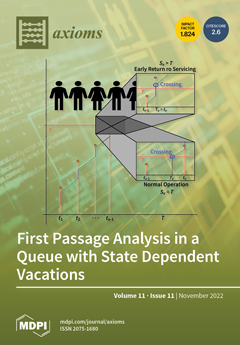In this study, we developed an autonomous non-linear epidemic model for the transmission dynamics of susceptible, vaccinated, infected, and recovered individuals (SVIR model) with non-linear saturation incidence and vaccination rates. The non-linear saturation incidence rate significantly reduces the death ratio of infected individuals
[...] Read more.
In this study, we developed an autonomous non-linear epidemic model for the transmission dynamics of susceptible, vaccinated, infected, and recovered individuals (SVIR model) with non-linear saturation incidence and vaccination rates. The non-linear saturation incidence rate significantly reduces the death ratio of infected individuals by increasing human immunity. We discuss a detailed explanation of the model equilibrium, its basic reproduction number
local stability, and global stability. The disease-free equilibrium is observed to be stable if
, while the endemic equilibrium exists and the disease exists permanently in the population if
. To approximate the solution of the model, the well-known Runge–Kutta (RK4) methodology is utilized. The implications of numerous parameters on the population dynamics of susceptible, vaccinated, infected, and recovered individuals are addressed. We discovered that increasing the value of the disease-included death rate
has a negative impact on those affected, while it has a positive impact on other populations. Furthermore, the value of interaction between vaccinated and infected
has a decreasing impact on vulnerable and vaccinated people, while increasing in other populations. On the other hand, the model is solved using Euler and Euler-modified techniques, and the results are compared numerically and graphically. The quantitative computations demonstrate that the RK4 method provides very precise solutions compared to the other approaches. The results show that the suggested SVIR model that approximates the solution method is accurate and useful.
Full article




